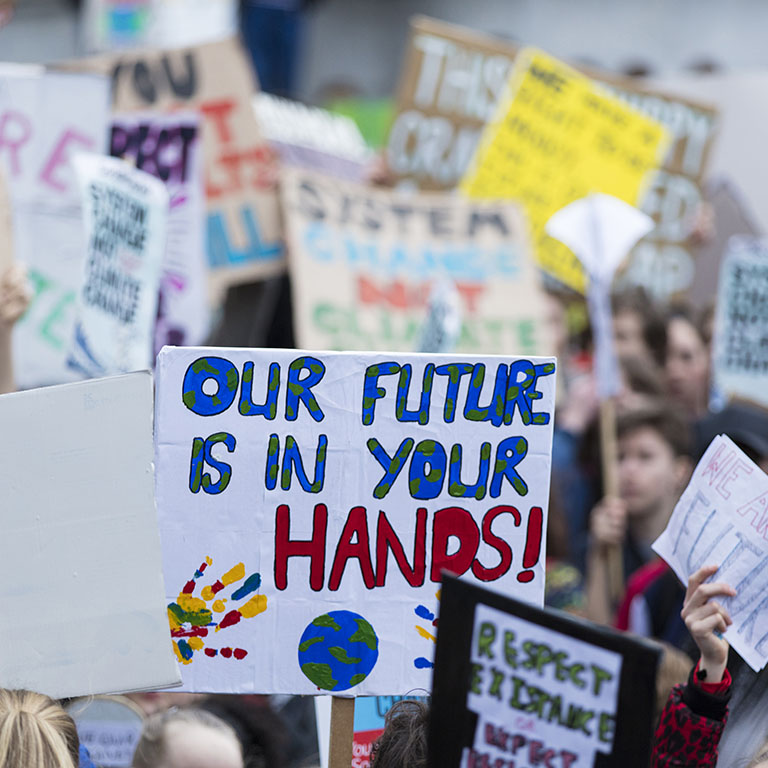
By Nicholas Faull ,
Head of Climate & Sustainability Risk and Innovation
11/02/2023 · 5 minute read
The climate crisis will increasingly generate and exacerbate both climate and nature risks. These will significantly affect the nature or ecosystem services on which economies depend, from clean water to productive agricultural land to relatively predictable weather cycles. With around half the world’s GDP – now over US$50 trillion – either moderately or highly dependent on nature, the pressing need for financing the fight against climate change is ever clearer.
According to the most recent Global Landscape of Climate Finance report, to stay on the Paris Agreement pathway of limiting warming to 1.5C over pre-industrial levels, the world will collectively need to be spending over US$4 trillion per year on furthering the decarbonization agenda before the end of this decade, and over US$6 trillion per year by the 2040s. The most recent estimates for current spending are a fraction of that: less than US$1 trillion.
However, closing this finance gap will not only be about finding more money for investment, but also about deciding on the most impactful ways to invest it.
There are two distinct areas of investment that need to be serviced when addressing the finance gap: reducing emissions - climate change mitigation, and building resilience - climate change adaptation.
To date discussions on the climate finance gap have focused more on mitigation – that is, acting to reduce the future extent of climate change, notably by addressing our greenhouse gas emissions as we transition towards net-zero. In 2020, over 90% of climate finance was being dedicated to mitigating our impact on the climate.
Even if mitigation goals were to be achieved, however, further climate change is already unavoidable, due to the emissions already in the atmosphere. As a consequence, adaptation – the need to cope with the impacts of changing climate – cannot be ignored. Investment in adaptation includes strengthening the resilience of agriculture, critical infrastructure, and supply chains.
The United Nations Environment Programme, in its Adaptation Gap Report 2022, estimated that the global need for adaptation finance could reach US$340 billion by 2030, and US$565 billion by 2050. These sums represent close to a tenfold increase on the amounts being invested in recent years.
While there is widespread consensus that mitigation is critically important, it has been more of a struggle to focus attention on the urgent need to invest in adaptation.
Some clients are reluctant even to discuss publicly their investments in adaptation, as they fear it might make them seem defeatist towards mitigation efforts. Calling for more finance for adaptation might also be mistaken for downplaying the need for more finance for mitigation. This should not be the case, as it is important to invest in both mitigation and adaptation.
That said, we face the difficult reality that real choices are having to be made about where to deploy limited resources. Between the rising cost of living and geopolitical priorities, it is all too easy for climate adaptation to be sidelined as a long-term ambition that can be shifted onto the back burner.
In contrast, the need for adaptation is here and now. Climate change is already impacting our clients and the communities in which they operate, with extreme weather events in 2023 ranging from wildfires in Canada to floods in Libya and drought in Chile.
Events such as these fit an upward trend of increasingly costly disasters. According to analysis by the World Meteorological Organization, weather-related events cost the global economy over US$1.4 trillion in the 2010s – more than a 50% increase on the previous decade.
While mitigation efforts must intensify, greenhouse gas emissions already in the atmosphere mean that there is a 65% chance the Paris Agreement’s goal will be breached by 2027.
In contrast to climate change mitigation, relatively few metrics exist to track progress towards adapting to climate change.
Partly, this reflects the complexity of the issue. When it comes to mitigation, the sectors in need of decarbonization are typically similar across regions. The optimal strategies for adaptation, however, can vary significantly depending on local conditions. This is due, not only to differences in the specific impacts of climate change in any given area, but also the site characteristics, the land use of the location, and any resilience measures already in place at a regional level.
Nonetheless, a range of policy options exist, from reforming building codes and land use planning to providing incentives such as tax credits and grants for resilient infrastructure projects. Policymakers and other stakeholders – including the insurance sector – must collaborate to help shape regulation that supports adaptation efforts.
In calling for a “global climate adaptation overhaul”, the UN Secretary-General António Guterres last year issued an unequivocal warning. “The world is failing to protect people from the here-and-now impacts of the climate crisis… The most vulnerable people and communities are paying the price.” For this reason, the adaptation financing gap needs to be high on the agenda at COP28.

Article,Featured insight
12/01/2025